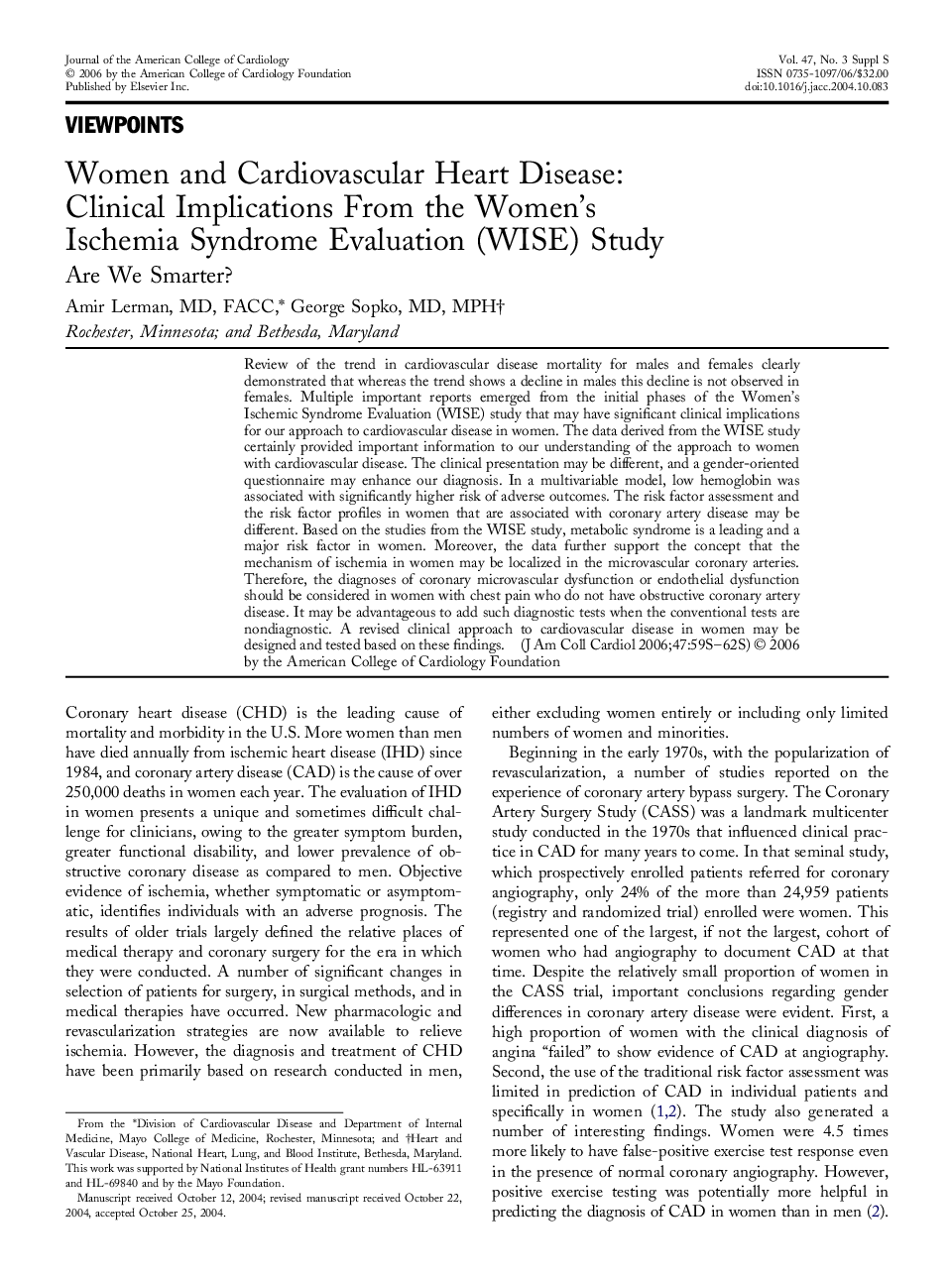| Article ID | Journal | Published Year | Pages | File Type |
|---|---|---|---|---|
| 2955190 | Journal of the American College of Cardiology | 2006 | 4 Pages |
Review of the trend in cardiovascular disease mortality for males and females clearly demonstrated that whereas the trend shows a decline in males this decline is not observed in females. Multiple important reports emerged from the initial phases of the Women’s Ischemic Syndrome Evaluation (WISE) study that may have significant clinical implications for our approach to cardiovascular disease in women. The data derived from the WISE study certainly provided important information to our understanding of the approach to women with cardiovascular disease. The clinical presentation may be different, and a gender-oriented questionnaire may enhance our diagnosis. In a multivariable model, low hemoglobin was associated with significantly higher risk of adverse outcomes. The risk factor assessment and the risk factor profiles in women that are associated with coronary artery disease may be different. Based on the studies from the WISE study, metabolic syndrome is a leading and a major risk factor in women. Moreover, the data further support the concept that the mechanism of ischemia in women may be localized in the microvascular coronary arteries. Therefore, the diagnoses of coronary microvascular dysfunction or endothelial dysfunction should be considered in women with chest pain who do not have obstructive coronary artery disease. It may be advantageous to add such diagnostic tests when the conventional tests are nondiagnostic. A revised clinical approach to cardiovascular disease in women may be designed and tested based on these findings.
